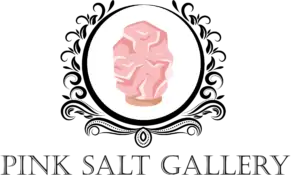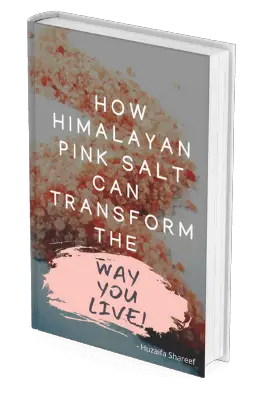
Huzaifa Shareef
Author

Himalayan Pink Salt Side effects
It’s a fact that Himalayan pink salt is popular due to its goodness of minerals. But to our surprise, it has some downsides too.
We know, moderation is the key. Both overconsumption and underconsumption lead to Himalayan pink salt side effects.
As to explain the possible reasons behind these side effects and their association with diabetes, we’ve gathered some major points here.
HIMALAYAN PINK SALT SIDE EFFECTS – DIABETOLOGISTS’ OPINION
Himalayan pink salt side effects are usually associated with a lot of factors. Below is a detailed list of side effects that might occur with high or low usage of Himalayan pink salt.
Risk of low salt intake
First things first! When we fill a teaspoon with Himalayan pink salt and another with regular salt, do they quantify the same? The answer is, coarse grains of Himalayan pink salt take lesser grains to occupy it.
Also, Himalayan pink salt isn’t 100% sodium chloride. It explains why its sodium content is 1680 milligrams per teaspoon, much lower than regular salt.
It means less sodium! Many of us think salt restriction to be a good thing, but there’s more to it than meets the eye.
In reality, it contributes to Himalayan pink salt side effects. Combining it with a low salt diet, we might face insulin resistance.
But how does salt restriction lead to insulin resistance? Not to make the science behind it complex, it happens due to a mechanism in our kidneys. This mechanism holds on to sodium when it’s scarce.
Also, it uses insulin as a means to do so. Over time, our bodies become more and more insulin resistant to retain salt.
Risk of high salt intake
We know, Himalayan pink salt has maintained an exceptional impression due to its mineral profile. But the notion consuming it more can help us get its maximum benefits is false.
Contrary to that, it’ll lead to more sodium intake. And each gram of excess salt counts!
It’s a problem when you are both hypertensive and diabetic. Insulin resistance along with high levels of insulin are the contributing factors.
As a rule of thumb, more salt causes more water retention. When the volume in arteries goes up, the blood pressure increases. In simple words, a high intake of Himalayan Pink Salt causes high blood pressure. As a result, we can get swollen feet, which isn’t pleasant while being diabetic.
In more severe cases, it might contribute to hypernatremia. It’s when sodium concentrations are high in our bodies and water depletes due to frequent urination.
Insufficient iodine
When we eat salt, we might think of it as a reliable source of iodine. It’s not true in the case of Himalayan pink salt, as one of its side effects is low iodine content.
But if you’re wondering, ‘How on earth iodine deficiency and diabetes could be related?’ then here’s why. We know, that iodine ensures the proper functioning of our thyroid gland.
Our thyroid hormones play a role in activating and deactivating insulin. This activity helps in keeping a balance in glucose equilibrium in our bodies.
So what if we get short of iodine when suffering from diabetes? The simple answer to that is we’ll develop insulin resistance.
A study also revealed this lesser-known relationship. According to it, Type 2 diabetic patients tested low for iodine, which calls for more regular screening of their urinary iodine.
Disruption of electrolytes
Electrolytes cause our body cells to swell and shrink. It’s because, besides several essential functions, they don’t let our body fluids go out of balance.
Talking about the most abundant electrolyte in Himalayan pink salt, it’s chloride. To be precise, it’s 590.93 grams per kilogram of Himalayan pink salt.
Like sodium, chloride in excess is harmful to us. Remember pH? It measures the acidity or alkalinity of a solution. Due to its acidic nature, surplus chloride makes diabetes complications worse.
When too much consumption of Himalayan pink salt makes sodium go up, none of the electrolytes goes right. One of them is potassium, which aids store glycogen.
If you have seen a seesaw, then imagine it for a second. Sodium and potassium, always go in opposite directions, just like two children sitting on a seesaw. Low levels of potassium cause less insulin production than high levels of glucose.
Also, magnesium is in the same boat and goes down when sodium goes up. Low magnesium causes poor management of sugar levels in our blood.
As for calcium, high sodium causes it to flush out of our bodies. It leads to osteoporosis too.
So, Himalayan pink salt side effects also imply electrolyte disturbance due to excessive consumption. They face a shift that’s more drastic than our mood swings.
Irreplaceable to chromium and vanadium supplements
No matter how much Himalayan pink salt we consume, we still won’t get enough chromium and vanadium. We might end up buying supplements.
These macro minerals, though present in natural form in Himalayan pink salt, are minute.
Digging a bit further, both these minerals help manage type 2 diabetes and even prediabetes. Yes, you read that right!
Vanadium mimics the action of insulin and lowers the levels of sugar in our blood. Whereas, chromium can make our insulin sensitivity better. These minerals are no more than a blessing of nature.
Diabetes and other complications
Diabetes complications also add to the side effects of Himalayan pink salt, when we take its high doses. The reason is none other than insulin resistance.
When we’re salt-sensitive along with suffering from diabetes type 2, sodium can affect our blood pressure even more. The reason is an increased reactivity of blood vessels. It further leads to other cardiovascular diseases.
Not only that but our kidneys also get impacted due to uncontrolled consumption of Himalayan pink salt. Diabetes causes our kidneys to receive a decreased flow of renal plasma in the presence of high sodium.
When this happens, it also leads to hypertension. You may have to use diuretics for the excretion of extra amounts of sodium.
It doesn’t stop here! If you’re diabetic, then extra salt intake can add to your pain by making you gain weight. So we’ve to keep a check on it.
Recommended Daily Dose Of Himalayan Pink Salt
Adults should not take more than 6 grams (1 tablespoon) of Himalayan Pink Salt in a single day. Whereas, children of 1-3 years should take no more than 2 grams and children of 4-6 years should take no more than 3 grams of salt in a single day.
THE TAKEAWAY
Himalayan pink salt side effects exist side by side with its benefits. We should keep in mind the recommended limits while consuming it.
Otherwise, it can make us suffer from aggravated situations like diabetes. If we don’t do that, then we’ll have to face the music.
© [year]. Pink Salt Gallery All Rights Reserved.




